Campbell’s Dwarf Hamster: Pictures, Temperament & Traits (Vet-Verified Info)
Updated on

Click to Skip Ahead
Cost
Temperament
Intelligence
Food & Diet
Habitat Needs
Exercise & Sleeping Needs
Grooming
Fun Facts
Counting both wild and domestic species, there are over 20 known species of hamsters out there 1. Some of them are better suited to life as a companion pet than others, such as the Campbell’s Dwarf Hamster (Phodopus campbelli). Their name might be a mouthful, but these minuscule gray-brown hamsters are one of the best pint-sized pals you could ask for. Let’s check out some more details on the Campbell’s Dwarf Hamster, including how big they get, what they’re like, and how to care for them.
| Size: | 3–4 inches |
| Weight: | Approximately 1–2 ounces (28–50 grams) |
| Lifespan: | 2–3 years |
| Similar To: | Djungarian hamster |
| Suitable For: | Nearly anyone, including apartment dwellers, seniors, and older children |
Also known as Campbell’s Russian Dwarf Hamster, these little critters were actually first discovered in Mongolia. They’re sometimes confused for the Winter White Dwarf Hamster, but Campell’s hamsters display more prominent gray-brown dorsal markings and an overall darker color. Campbell’s hamsters have a slightly narrower face and eyes closer together than the Winter White as well. Both species share a similar personality.
Campbell’s Dwarf Hamster Characteristics
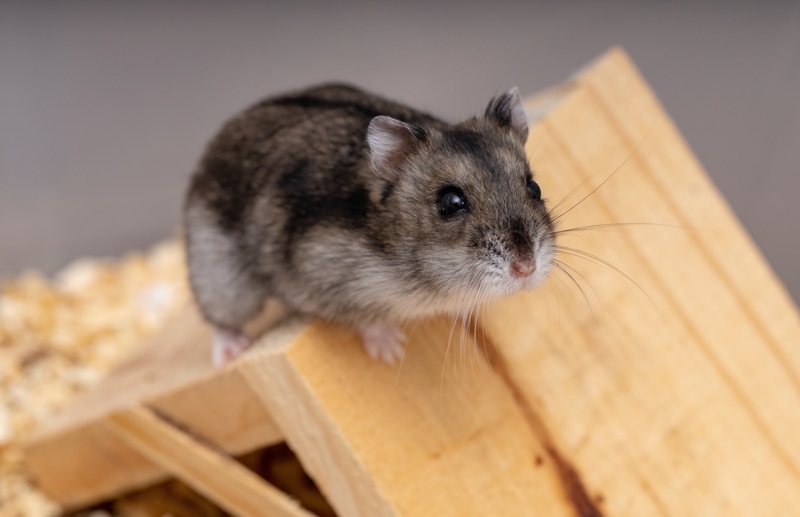
How Much Do These Hamsters Cost?
Campbell’s Dwarf Hamsters are among the most plentiful and affordable hamsters, so you can expect low prices. On the lower end, you can expect to get away with one for as cheap as $15, or up to $45 or more depending on your area’s supply of this species. They’re a very popular species, so you shouldn’t have much trouble finding one at a local pet store.
Temperament & Intelligence of the Campbell’s Dwarf Hamster
Don’t get us wrong, despite a more surly reputation than other species, the Campbell’s Dwarf Hamster is still a lively little ball of electric energy. They love nothing more than skittering around their habitat checking new stuff out, zooming back and forth, playing on wheels or in balls, or navigating play tunnels like a little furry miner. These hamsters have a similar curious spirit to other hamsters, and they could even be called cat-like to some.
As far as intelligence, Campbell’s Dwarf Hamsters aren’t joining Mensa anytime soon, and learning their name (or so many believe) is the most advanced “trick” most are capable of. In reality though, they’re likely responding to a familiar smell rather than their name.
In some rare cases, they can anecdotally be taught to come or even perform very simple tricks like lying down, but this is extremely uncommon and would take a good amount of time and dedication for training.
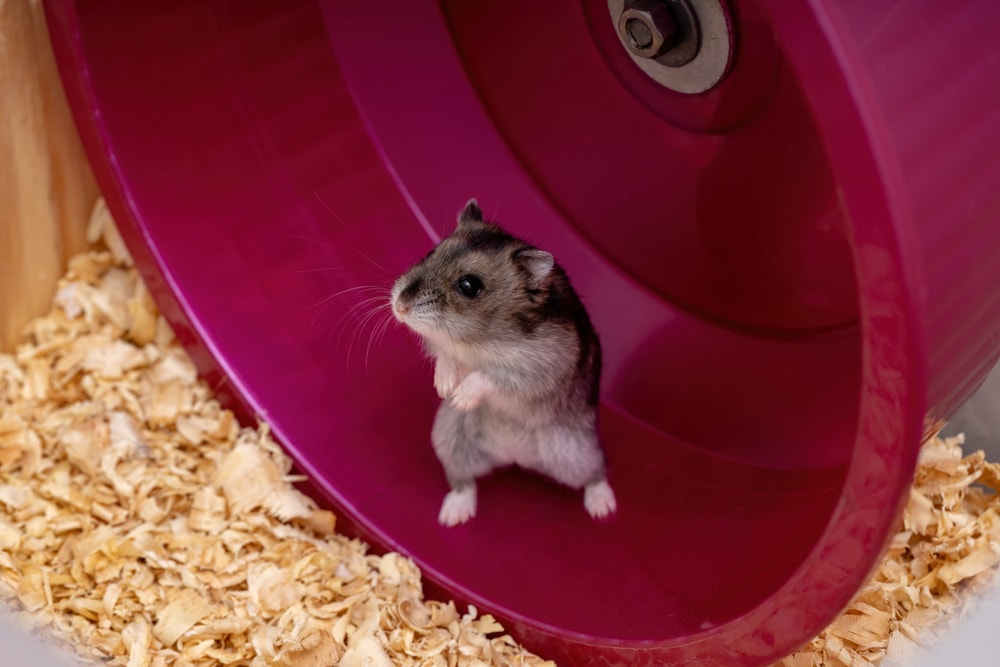
Do These Hamsters Make Good Pets?
Yes, but they’re not necessarily the friendliest species of hamster out there and aren’t the cuddliest furry pet you can own. Many Campbell’s Dwarf Hamsters are very friendly when socialized with humans while still young, and they let you know when they’re overstimulated by gently nipping. Other individuals are more grumpy and less social, but it’s a case-by-case situation. Like other hamsters, they do best when housed alone.
Does This Hamster Get Along With Other Pets?
As small prey animals, Campbell’s Dwarf Hamsters aren’t great fits for homes with cats, dogs, or ferrets, but mellower dogs might get a pass if they’re kept mostly separate. Even then, you’d have to be extremely careful. This is because even the mere smell of a predator (including one they’re not exposed to before) can stress out a hamster. Therefore, they aren’t considered compatible with other pets.
Things to Know When Owning a Campbell’s Dwarf Hamster
Food & Diet Requirements
Campbell’s Dwarf Hamsters are omnivores that eat both plants and bugs in the wild. As pets, they’re often given pellets, hay, and other species-appropriate treats. They need free access to food and water at all times or their bodies could suffer metabolic shock. Some owners recommend ceramic or metal water bowls with shallow lips, but others go with the tried-and-true water bottle dispenser on the side. Both have their merits, but personally, we find the water bottle less hassle and are less of a mess to clean up after.
As for food, Campbell’s Dwarf Hamsters thrive with high-quality dwarf hamster food composed from their natural diet of seeds, nuts, veggies, and plants, and sometimes they throw insect protein in there too. For roughage and all-day grazing, you can load up your hamster’s cage with soft, fresh timothy hay. It keeps their bowels regular, encourages activity, and is an all-around healthy snack.
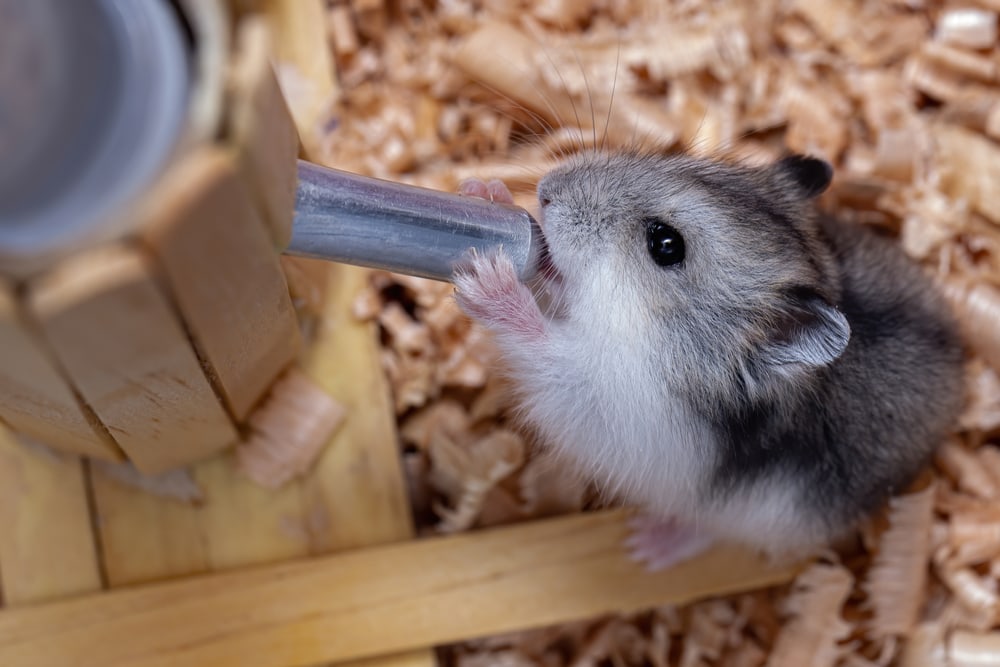
Habitat Needs
Campbell’s Dwarf Hamsters are hardy hamsters that naturally live in dry, hot semi-arid climates like Mongolia, but what does that mean for their habitat? We recommend a cage as big as you can comfortably fit into your home, as they thrive with space to dig, explore, play, and burrow.
Habitats may be as basic as a standard-sized cage filled with shredded aspen wood shavings and a hamster wheel for exercise, or as extensive as networked play tunnel habitats designed for hamsters. They build very complex tunnel systems in the wild themselves and will use whatever you give them! It’s really up to your space constraints and budget how big you go.
That said, make sure you note the bar spacing for wire cages and determine if they’re large enough for your hamster to fit through. For maximum security, select a cage with bars as close together as possible, or just choose a transparent one for simplicity and security’s sake. As a bonus, you won’t have to worry about wire floors hurting your hammy’s tender little feet.
Exercise & Sleeping Needs
Hamsters are known to be hyperactive, and Campbell’s Dwarf Hamsters are no exception. They spend much of their days digging, burrowing, and playing depending on their habitat and the toys available. Wild Campbell’s Dwarf Hamsters are nocturnal. However, as pets, they’re observed as having polyphasic sleep patterns, meaning their ideal 12–14 hours of sleep per day is broken up throughout the day. They typically wake up in the mid-morning for a few hours, nap, resume their activities, and repeat throughout the day.
Hamsters don’t need any special lighting to maintain their schedule, but erratic lighting can throw it off. As long as you keep the lights or windows open around the same times each day so your hamster can learn what to expect, they’ll be fine.
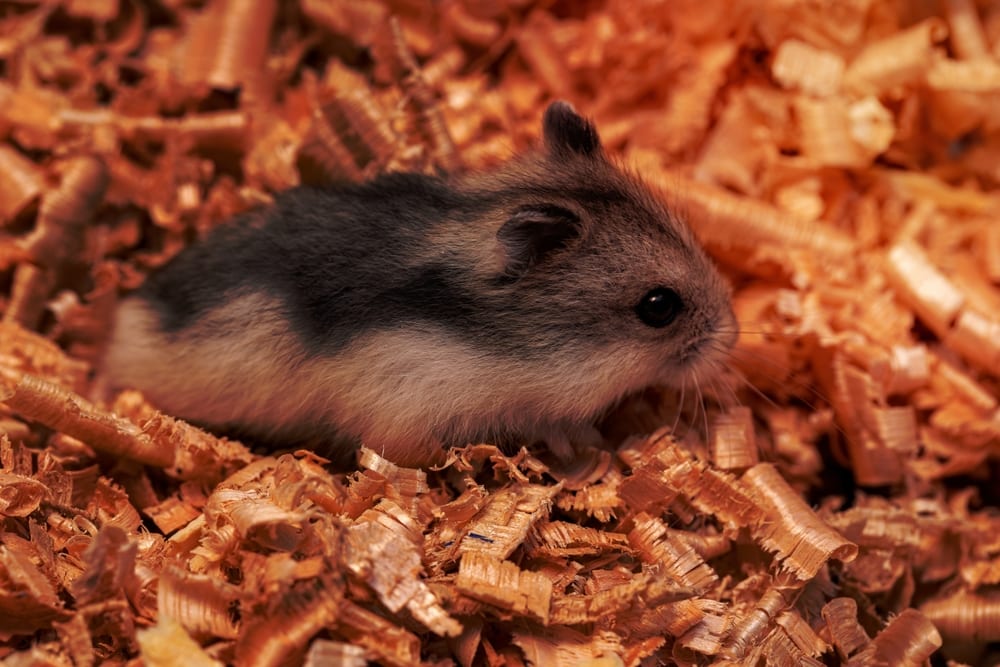
Grooming
Like other hamster breeds, Campbell’s Dwarf Hamsters are fastidious about self-grooming and are completely capable of maintaining their fur without your help. The only exceptions would be if a hazardous liquid or chemical spilled on them, in which case you’d use a damp cloth to very gently wipe away the offending liquid and immediately dry them.
Do not physically remove any adhesives or foreign matter from their fur yourself if it won’t wipe away with a cloth. Instead, call a trusted vet who has experience with hamsters for advice on the next steps. They may ask you to come in if it’s a severe case, or they will offer alternative actions you can use at home if not.
Fun Facts About the Campbell’s Dwarf Hamster
1. Their Teeth Constantly Grow Throughout Their Lives
Rodents including rats, mice, and hamsters are all marked by constantly growing teeth that they file down through grazing and nibbling. Without ample material to get their frustrations out, a Campbell’s Dwarf Hamster can develop a painful overbite and not be able to eat.
2. They Reproduce Very Quickly
People joke about bunnies, but hamsters are promiscuous too! With lifespans of just 2 or 3 years, Campbell’s Dwarf Hamsters become sexually mature and active at just 3–4 weeks. If they’re allowed to mate, they can have litters of four to six pups less than a month later. That’s a lot of hamsters if left unchecked.
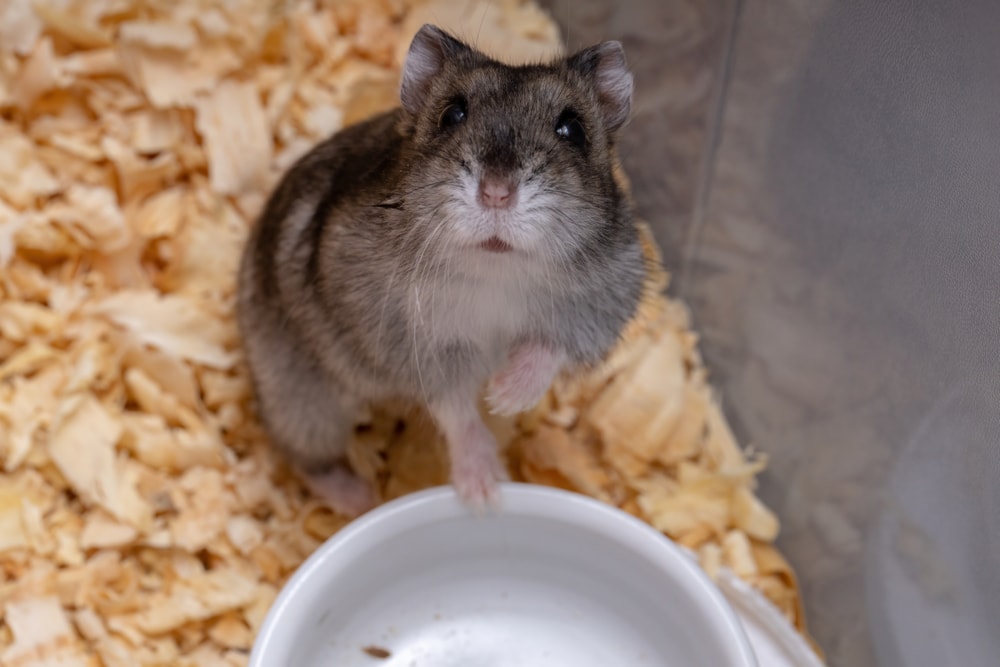
3. They’re Easily Confused With Mice
The gray-brown coat of the Campbell’s Dwarf Hamster is easily mistaken for that of a house mouse, though to a trained eye, they’re distinct critters. Campbell’s Dwarf Hamsters aren’t found in most American households, though, and you typically have to go out of your way to find them.
Conclusion
Campbell’s Dwarf Hamsters aren’t as popular as Syrian Hamsters, but they’re still a great pick for anyone who’s a little familiar with hamster care. They’re not especially long-lived, but that makes the time you have with them even more precious.
Featured Image Credit: Vinicius R. Souza, Shutterstock










